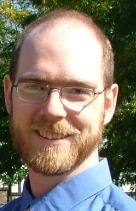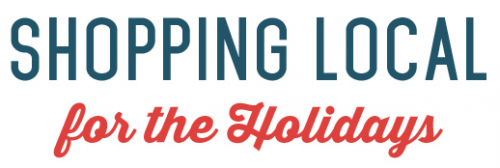Thrive Calgary introduces new learning community in January

If more people have access to community economic development learning opportunities, more community economic development action will emerge in Calgary.
That’s the bet, if you will, that Thrive Calgary, the city’s community economic development network, is making as it prepares to launch a new learning community early in the new year.
It’s a big and exciting shift for the network, though Thrive has always sought to be a relevant, effective force for ushering in Calgary’s new economy.
In the past, however, the work has centred on collaborating to put community economic development on the local policy map. In the last few years, that goal has largely been achieved.
Thanks to Thrive and others, community economic development is now a part of the city’s new Enough for All poverty reduction strategy as well as the economic development strategy hosted by the conventional economic developmental agency, Calgary Economic Development.
Now Thrive is sharpening its focus in 2015: Community economic development leadership and learning is its refreshed mandate.
The shift builds on a number of education achievements Thrive has already spearheaded. As an example, in 2014, a big focus was bringing the Simon Fraser University Community Economic Development certificate program to Calgary for the first time.

The community economic development program
offered in Calgary last year.
The 21 graduates of this program are now acting to improve the local community in many concrete ways. For instance, one graduate is preparing to launch a co-operative housing project in Ogden. The idea is to make it easy for seniors to establish income suites in their basements so they can live longer in their homes.
Another graduate led the development of the Calgary EATS! Strategy which was just approved by city council. This strategy for a local, sustainable food system includes community economic development as a core principle.
A third graduate works at the Calgary Regional Partnership, where community economic development is emerging as an important focus area for the region. This means that community economic development could become part of the fabric of how the 11 municipalities in the region interact.
Thrive has determined to make learning its official strategic focus following a series of community consultations and discussions with various partner organizations over the past several months.
Shaping this new effort is a belief that the most effective learning both builds human capital and creates a frame for political empowerment.
“It’s one thing to move people through a curriculum and learn what’s on the page,” says Barb Davies, Thrive’s community economic development co-ordinator, who over the past few months has done some great work herself building community economic development capacity in the community. She has taught introductory community economic development workshops to18 students at the faculty of social work and 23 community members through the Ethnocultural Council of Calgary. She aso co-hosted Calgary’s first Social Impact Failure Wake, a celebration of community economic development projects that didn’t work out as expected.
“We’re really trying to inspire people to question the frame we live in in the first place and really seed a broad, diverse community of leaders who are ready to take action in their own communities,” Barb says.
Thrive’s learning community will offer a balance of opportunities for people to learn from those who hold new knowledge, as well as to create their own knowledge as peer learners.
Again, this is an approach it’s taken in the past. In 2014, for instance, Thrive provided Calgarians the opportunity to learn from well-recognized community economic development thought leaders such as Charles Eisenstein, Michael Shuman, and Anne Docherty. The graduates of the Simon Fraser University Community Economic Development certificate program now support each other with implementing community economic development strategy and ideas.
“We want to create the most permeable membrane between a learning environment, action environment and community as we can,” says Barb, noting a key inspiration for the effort is the Storytellers’ Foundation in Hazelton, BC.
The shaping of this learning community comes as Calgary moves into the next phase of actualizing its Enough for All strategy – a bold plan to reduce poverty in the city by half within the next 10 years.
Momentum’s community relations director, Carolyn Davis, sees the learning community as one strong path to realizing that goal.
“I really believe that we’re not going to be able to do that unless there is a sea change in the way that we think,” she says. Her sincere hope is that through the learning community people are empowered and inspired to take the kind of action that generates a shift in systems and root causes leading to significant change for people.
The time is also ripe for an effort of this sort as local energy grows around new economy concepts and action, thanks to people and groups such as REAP Business Association actively bringing them into the mainstream.
Thrive wades into this new effort with a collection of robust assets, including an engaged and committed network as well as steering committee that brings a rich diversity of perspectives on community economic development. Thrive’s parent organization Momentum, which has both a sturdy reputation and significant support from the community as well as a great team, is also a solid asset.

Laura Wells and Carolyn Davis capture insights
from speakers and audience members at Thrive’s
Pathways2Sustainability Showcase in 2013.
Photo credit: Amanda Sneddon Photography
Thrive also counts itself blessed to have the funders it does — Family and Community Support Services of Calgary and the United Way of Calgary and Area. Both put forward visionary leadership in understanding that reducing poverty ultimately comes down to creating an economy that works better for more people.
Looking ahead, the opportunity and challenge is to present the intent and possibilities in this learning community in a way that reveals it as a real and concrete force for good, Carolyn says.
“One way this has worked so far is through partnership with post-secondary institutions and community organizations,” she adds. “In the last six weeks of 2014 Thrive reached over 120 people through learning events and workshops. This gives me energy as Barb and I develop the learning calendar for 2015.”
Committed to walking the new economy talk with respect to how it ensures the sustainability of this effort, Thrive is moving to a revenue model that includes both funders and participation from those who join its programs and events. In this way, it is striving to create a balance between ensuring a level playing field and accessibility.
This article was originally posted by New Scoop on January 7, 2015 and appears here with permission.
Michelle Strutzenberger brings more than 10 years of experience in writing, social media, curation and digital distribution. Subject areas of interest include creating abundant or deep communities, social-mission business, education that strengthens kids’ sense of hope and possibility and journalism that helps society create its preferred future. She is currently supporting the development of Axiom News podcasts. Contact Michelle at michelle at axiomnews.com.
 Building Resilient Community Conference invites explorations of how various ‘dark horses’ in the broad North Atlantic – including minorities, small towns, peripheries, aboriginal communities, those with little money, status, voice or political leverage – can rise to the occasion and chart liveable futures.
Building Resilient Community Conference invites explorations of how various ‘dark horses’ in the broad North Atlantic – including minorities, small towns, peripheries, aboriginal communities, those with little money, status, voice or political leverage – can rise to the occasion and chart liveable futures.







 Co-ops: The bilingual apex organization for the co-operative movement in Canada, Co-ops and Mutuals Canada, was
Co-ops: The bilingual apex organization for the co-operative movement in Canada, Co-ops and Mutuals Canada, was  International: The Social and Solidarity Economy is getting increasing attention at the United Nations thanks in large part to
International: The Social and Solidarity Economy is getting increasing attention at the United Nations thanks in large part to  Enabling Policy: Manitoba and Québec continue to lead on the policy front: Manitoba introduced a
Enabling Policy: Manitoba and Québec continue to lead on the policy front: Manitoba introduced a  Supporting a New Economy: Last June, the New Economy Coalition held their
Supporting a New Economy: Last June, the New Economy Coalition held their 
 Is your non-profit organization:
Is your non-profit organization: LISC study details strategies that make poor neighborhoods more resilient
LISC study details strategies that make poor neighborhoods more resilient
 As I ponder how we analyze a community economy, I think I am starting to understand my continual aversion to the on-going efforts to ‘map social economy’ or ‘mapping social enterprise’. And it may not be just my irrational obstinate character!
As I ponder how we analyze a community economy, I think I am starting to understand my continual aversion to the on-going efforts to ‘map social economy’ or ‘mapping social enterprise’. And it may not be just my irrational obstinate character!

 The Canadian Alternative Investment
The Canadian Alternative Investment Momentum’s Self Employment program has offered business training to Calgarians since 1998. Because our participants face barriers such as disability, income level, or low education, they would have difficulty starting a business on their own. Still, we know that with the right supports, these individuals can be successful launching a business that will improve their livelihood and maybe even create jobs for others. After 20 years and 700 participants, we have a fine-tuned model that comes with a powerful promise.
Momentum’s Self Employment program has offered business training to Calgarians since 1998. Because our participants face barriers such as disability, income level, or low education, they would have difficulty starting a business on their own. Still, we know that with the right supports, these individuals can be successful launching a business that will improve their livelihood and maybe even create jobs for others. After 20 years and 700 participants, we have a fine-tuned model that comes with a powerful promise.


 The holiday season is often a time when we feel we can reaffirm our values. Like Ebenezer Scrooge at the end of Charles Dickens’ A Christmas Carol, we pull away from our inward looking preoccupations and reawaken to the importance of our familly and friends and the community around us. At the same time,
The holiday season is often a time when we feel we can reaffirm our values. Like Ebenezer Scrooge at the end of Charles Dickens’ A Christmas Carol, we pull away from our inward looking preoccupations and reawaken to the importance of our familly and friends and the community around us. At the same time, 

 Co-operative Gift Bundle
Co-operative Gift Bundle Get the Facts on Shopping Local for the Holidays
Get the Facts on Shopping Local for the Holidays
